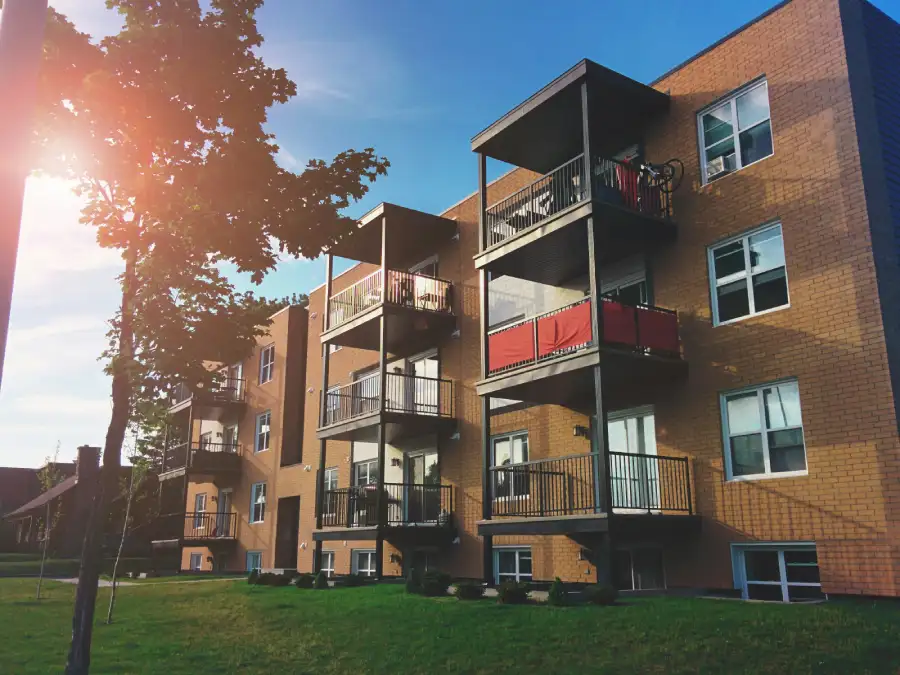Introduction
The real estate market serves as a crucial pillar of the global economy, providing various investment chances and housing options. In this blog , we explore different types of properties in real estate and their importance in the constantly changing real estate scene.
From residential homes to commercial spaces, each type offers unique benefits and considerations for investors and homeowners alike. Understanding these intricacies can help individuals make informed decisions in navigating the complexities of the real estate market, whether it’s for investment purposes or finding the perfect place to call home.

Brief Overview of the Real Estate Market
The real estate market encompasses the buying, selling, and leasing of properties, ranging from residential to commercial and investment properties. It operates within the framework of economic trends, market demand, and regulatory policies, making it a dynamic and multifaceted sector.
Understanding Different Types of Properties in Real Estate
Understanding the nuances of various real estate property types is essential for investors, homebuyers, and industry professionals alike. Each property type presents unique opportunities, risks, and considerations, shaping investment strategies and housing choices.
Different Types of Real Estate Properties
Let us explore the different types of real estate properties :
Residential Properties
1. Single-Family Homes

These are standalone properties designed to accommodate one family. They offer privacy, autonomy, and often include amenities such as yards, garages, and private driveways. Single-family homes vary in size, style, and architectural design, catering to diverse preferences. They are typically owned by individuals or families seeking stability and long-term residency.
2. Apartments/Condominiums:

Apartments are units within multi-unit buildings, while condominiums are individually owned units within a larger complex. Both provide multifamily housing options, offering amenities such as swimming pools, fitness centers, and communal spaces. Apartments are usually rented, while condominiums can be owned and occupied by individuals or leased out by investors. They are popular in urban areas due to their convenience and proximity to amenities.
3. Townhouses:
Townhouses, also known as row houses or terraced houses, are multi-level properties that share walls with adjacent units. They combine the privacy of single-family homes with the efficiency of multifamily housing. Townhouses often feature private outdoor spaces, such as patios or rooftop terraces, and are suitable for families or individuals seeking a balance between urban living and homeownership.
4. Multi-Family Homes:
These properties comprise two or more separate living units within a single structure. Examples include duplexes, triplexes, and apartment buildings. Multi-family homes are valued for their income-generating potential, as investors can rent out multiple units to tenants. They require diligent property management to ensure tenant satisfaction and maintain rental income.
Commercial Properties
1. Office Buildings:
Office buildings are commercial properties designed to accommodate businesses, professional services, and corporate headquarters. They range from high-rise towers in central business districts to suburban office parks. Class A office buildings offer high-quality amenities and prime locations, attracting established corporations and tenants willing to pay premium rents.
2. Retail Spaces:

Retail properties encompass shopping centers, malls, strip malls, and standalone storefronts. They provide space for retailers to sell goods and services to consumers. Retail spaces thrive in high-traffic locations with easy access to transportation and parking. Successful retail properties adapt to changing consumer preferences and demographic trends to maintain competitiveness.
3. Industrial Properties:
Industrial real estate includes warehouses, distribution centers, manufacturing facilities, and research laboratories. These properties support various industrial activities, such as storage, production, and logistics. Industrial properties are essential components of supply chains, serving as hubs for storing and transporting goods. They require specialized infrastructure and proximity to transportation networks to facilitate efficient operations.
4. Hospitality Properties:
Hospitality properties cater to travelers and tourists, offering accommodations, dining, and recreational amenities. They include hotels, motels, resorts, and vacation rentals. Hospitality properties operate within the tourism and hospitality industry, serving leisure and business travelers alike. Successful hospitality properties prioritize guest satisfaction, service quality, and brand reputation to attract and retain customers.
Investment Properties
1. Rental Properties:

Rental properties generate rental income by leasing residential or commercial units to tenants. They offer investors the opportunity to earn passive income and build equity over time. Successful rental property investment requires thorough market analysis, property management skills, and adherence to landlord-tenant regulations.
2. Flipping Properties:
Property flipping involves purchasing distressed or undervalued properties, renovating or improving them, and selling them for a profit. Flipping properties requires a keen understanding of market trends, renovation costs, and resale potential. Successful flippers leverage their expertise to identify lucrative opportunities and execute profitable transactions.
3. Real Estate Investment Trusts (REITs):
REITs are publicly traded companies that own, operate, or finance income-generating real estate assets. They offer investors exposure to diversified real estate portfolios without the hassle of property management. REITs distribute a significant portion of their earnings as dividends, making them attractive investments for income-oriented investors seeking steady cash flow and capital appreciation.
Factors Influencing Real Estate Property Types
By now we know about different types of real estate properties, however, there exist certain factors that shape those properties, let us explore them :
Location

Location is a primary factor influencing property types. Proximity to amenities such as schools, shopping centers, and transportation hubs can increase property value. Desirable locations like waterfronts or urban centers often command higher prices. Additionally, factors like crime rates, environmental quality, and access to public services can also impact property values.
Market Demand
Market demand plays a crucial role in determining property types. Trends in demographics, such as population growth, household income levels, and cultural preferences, influence the demand for certain types of properties. For instance, areas experiencing an influx of young professionals may see increased demand for condominiums or apartments, while regions with aging populations may see a rise in demand for retirement communities or assisted living facilities.
Economic Factors

Economic conditions significantly affect property types. Factors such as employment rates, GDP growth, inflation, and interest rates influence both the demand and supply of properties. During economic downturns, there may be a decrease in demand for luxury properties, while affordable housing may see increased demand.
Zoning Regulations
Zoning regulations dictate how land can be used and developed within a specific area. These regulations determine the allowable property types, density, and building heights. Zoning laws can restrict certain types of developments in particular areas, such as industrial zones prohibiting residential construction. Compliance with zoning regulations is essential for property developers and investors to ensure legal and sustainable development.
Conclusion
In conclusion, each type of real estate property offers unique opportunities and challenges for investors, homeowners, and industry professionals. Understanding the intricacies of each property type is essential for making informed investment decisions and navigating the complexities of the real estate market.
About Protech Group
We at Protech always attempt to deliver the best properties to you with our great efforts and innovative ideas to build the ideal apartments with the best comfort and luxury in your own Guwahati city. Protech Group, with over 18 years of experience, comes with the new project of Protech Pride which is located in Bagharbari in Guwahati. To get your dream home with all the smart amenities you can reach out to us at Protech Group. To know more about us, you can click here.

